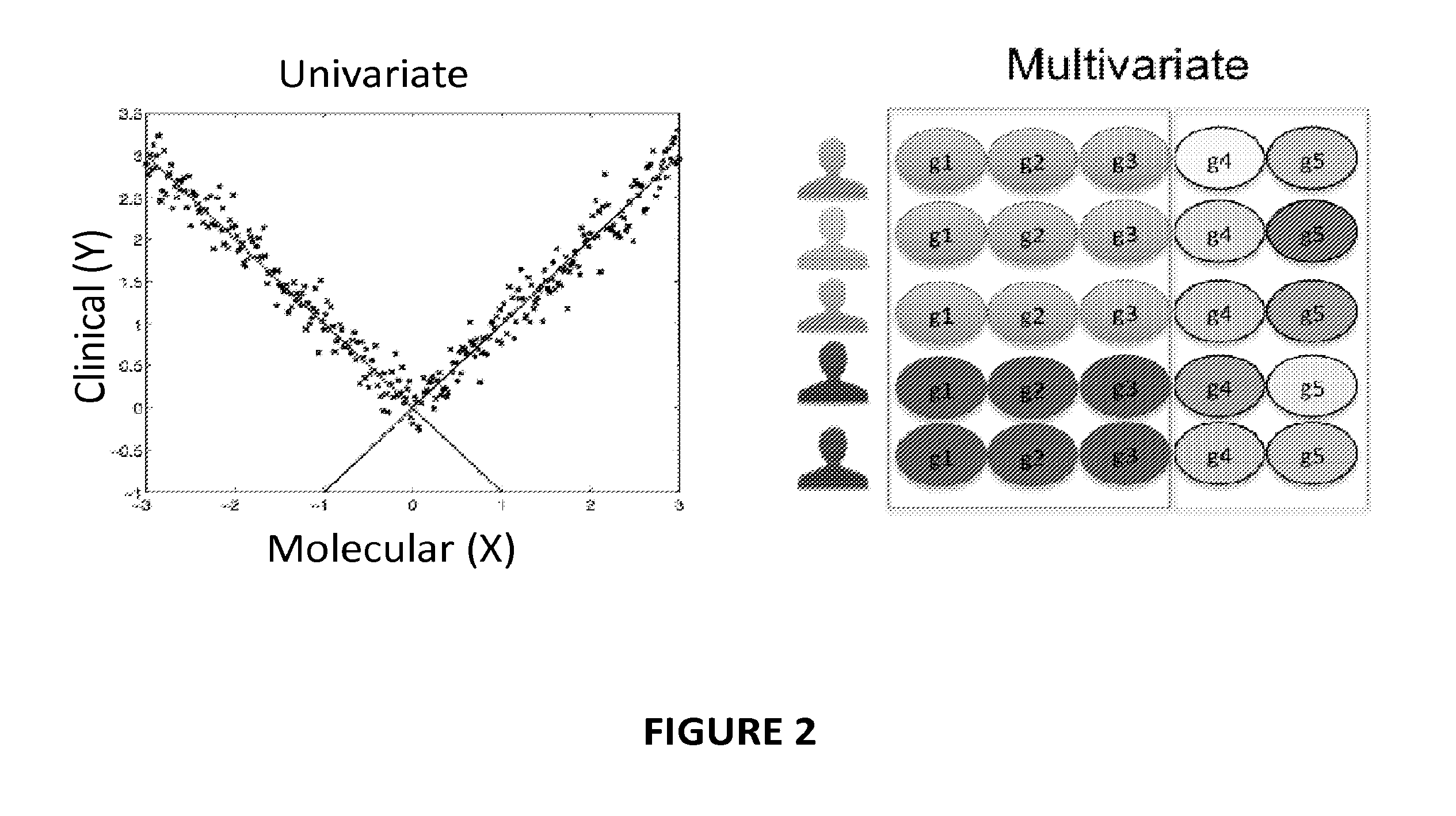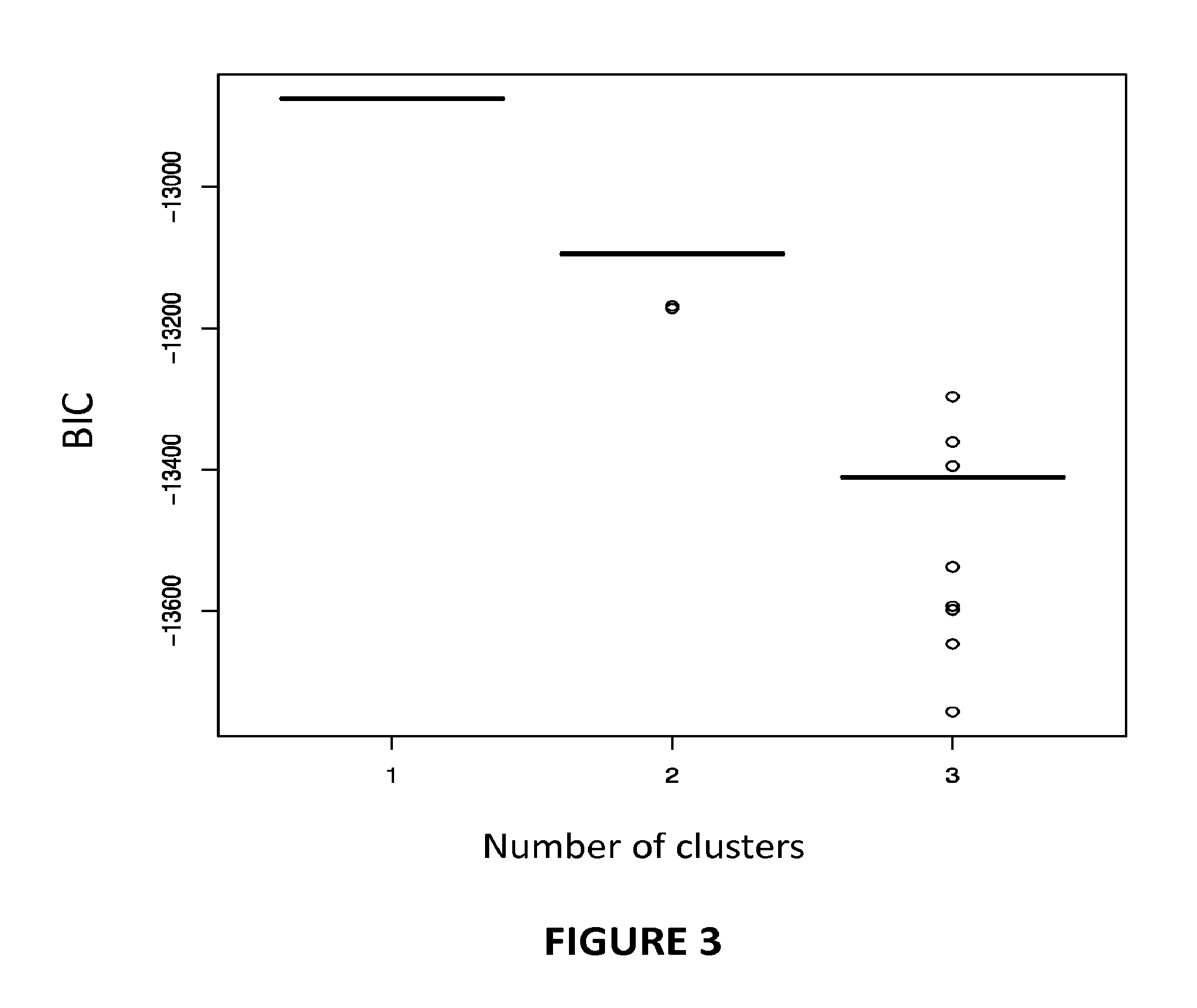Systems and methods for characterization of multiple sclerosis
- Summary
- Abstract
- Description
- Claims
- Application Information
AI Technical Summary
Benefits of technology
Problems solved by technology
Method used
Image
Examples
example 1
Patient Stratification in Secondary Progressive Multiple Sclerosis (SPMS) Using a Mixture of Experts Model
[0158]Multiple sclerosis (MS), particularly of the relapsing-remitting form (RRMS) has been extensively studied in the past years and various treatments have been developed. As of now, however, no therapy is effective against the more advanced stage of the disease, known as secondary progressive MS (SPMS). One of the major reasons for this is an increased heterogeneity in SPMS patients. In this example, the heterogeneity of SPMS represented by whole blood molecular profiles and clinical disease severity scores was examined.
[0159]Traditionally, molecular profiles of patient cohorts are first analyzed independently of the disease score to identify molecularly uniform classes. Once distinct classes are identified, one checks for association with disease score or progression. This approach assumes that molecular subgroups directly reflect differences in disease severity and / or progr...
example 2
Patient Stratification in Multiple Sclerosis (MS)
Summary
[0169]The objective of this Example is to identify subgroups of MS patients with more severe disease and distinct phenotypes. In particular, this Example aims to identify molecular characteristics of secondary progressive (SPMS) patients.
[0170]Towards this goal, the heterogeneity of MS represented by whole blood molecular profiles and clinical disease severity scores was examined. A new method for discovery of patient subclasses by looking at the joint space of molecular markers and disease scores was used. The premise of the method is that in this joint space, there may exist distinct subgroups of patients characterized by different dependencies between molecular and disease scores. The distribution of patients in the joint molecular (X) and clinical (Y) space was examined, a mixture of linear models was employed to explain the relationship between Y and X, and the optimal number of patient subgroups was identified. For molecu...
example 3
ExpertMIX Stratification: A Method for Integrated Modeling of Clinical and Molecular Disease Variability
Introduction
[0179]The objective of this Example is to model clinically observed variability along with the molecular variability of patient samples and provide an integrated perspective on molecular aspects of disease. A better understanding of the underlying causes and factors contributing to disease variability will provide patients with better prognosis and more effective treatment algorithms. Different clinical measures are employed to describe state or prognosis depending on treatment or monitoring objective. Clinical variability can be defined, for example, as varied disease severity, faster or slower disease progression, or different and unpredictable response to therapy.
[0180]This Example illustrates a new method (sometimes referred to herein as “expertMIX”) for discovery of patient subclasses looking at the joint space of molecular markers and disease scores. The algorith...
PUM
| Property | Measurement | Unit |
|---|---|---|
| Fraction | aaaaa | aaaaa |
| Level | aaaaa | aaaaa |
Abstract
Description
Claims
Application Information
 Login to View More
Login to View More - R&D
- Intellectual Property
- Life Sciences
- Materials
- Tech Scout
- Unparalleled Data Quality
- Higher Quality Content
- 60% Fewer Hallucinations
Browse by: Latest US Patents, China's latest patents, Technical Efficacy Thesaurus, Application Domain, Technology Topic, Popular Technical Reports.
© 2025 PatSnap. All rights reserved.Legal|Privacy policy|Modern Slavery Act Transparency Statement|Sitemap|About US| Contact US: help@patsnap.com



